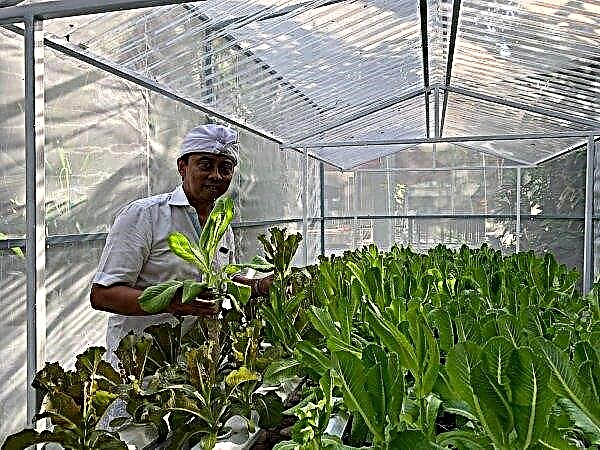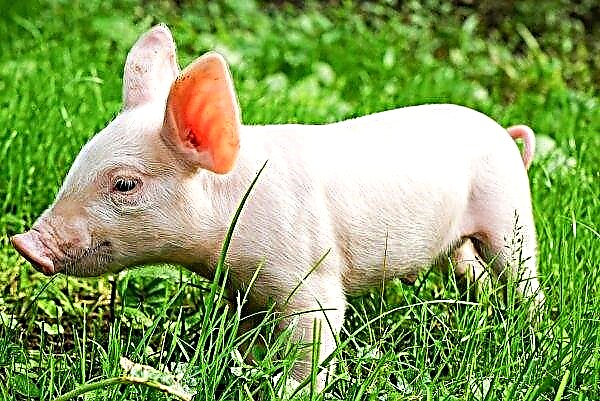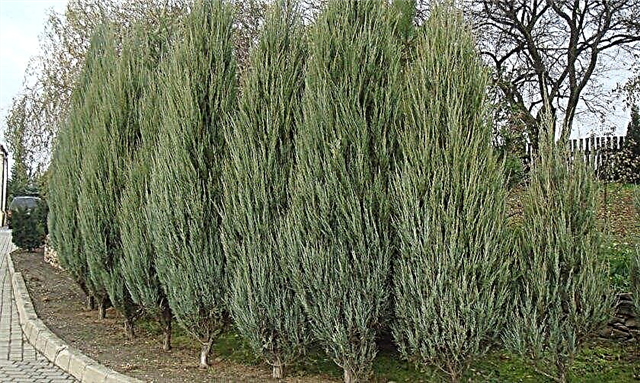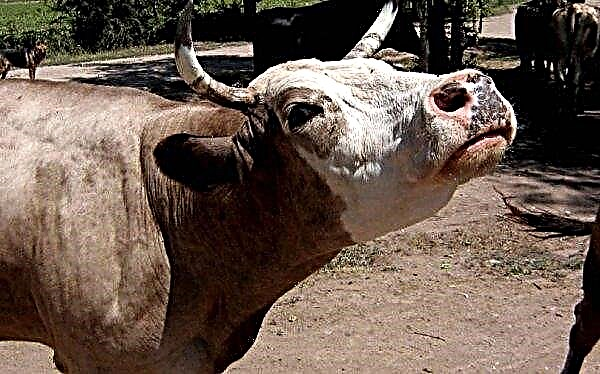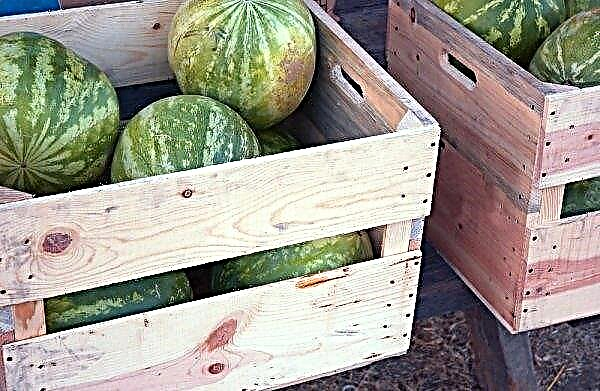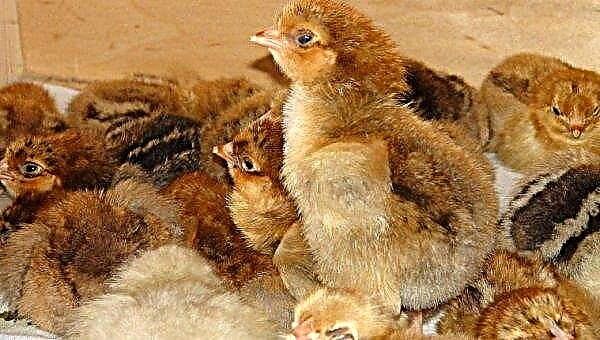Aphids are known to all gardeners. She with the same zeal is taken for the destruction of any garden crops, therefore, the fight against it is a priority. How to detect this insect, and what you should know about ways to get rid of it - read on.
What does aphid look like and what is it dangerous?
Aphids are small insects whose body length rarely exceeds 5–7 mm. There are about 4 thousand varieties. Each representative has a proboscis that helps to extract juice from the shoots and leaves of plants. There are both flying and ground forms of aphids, with large and almost invisible proboscis, which is associated with the nutritional characteristics of each individual genus.

Aphid life begins with the emergence of a larva from an egg, which leaves the outside world with the arrival of the first steady heat. Parents can lay eggs in the autumn, as many of them successfully survive the winter. A new individual, already in the form of a larva, begins to feed on the juices of the host plant.
The harm from the presence of aphids on cultivated plants has a triple nature:
- Firstly, insects themselves deplete the plant's nutrient reserves, without which it is impossible to fully form the fruits of the culture;
- Secondly, they attract other pests to the site (for example, ants feeding on their sweetish secretions - paddy);
- third, phytopathogenic viruses, which often serve as pathogens of other ailments, can get on plants along with aphids.
Whatever kind of aphids you had to encounter on the site, it is important to get rid of it in time, eliminating all possible causes of further breeding.Did you know? One aphid can bring up to three generations of new individuals in a month, with a total number of more than 100,000.
Causes and signs of occurrence
Willow and carrot aphids often settle on dill.
There are several reasons for its appearance:
- successful wintering of eggs in the soil of the selected area;
- egg-infected seed material;
- massive invasion of ants, which are the first carriers of these small pests.

Symbiosis with ants is very beneficial for aphids, because it is in their anthills that insects can successfully wait the winter to attack dill or other plants with the first spring rays.
You can detect pest activity on a crop by the following signs:
- deformation and drying of the apical part, which is explained by the increased consumption of juice from plant tissues;
- sticky marks on the surface of dill stalks;
- a large cluster of ants at the base and over the entire surface of the dill;
- pallor of the color of the plant, which is explained by a slowdown in photosynthesis due to the layering of sticky aphid secretions.
In addition, if you look at dill, it is easy to notice pest colonies, represented as a set of green or black moving dots on the inner or outer surface of dill branches and stems.
Important! It is practically impossible to wash away all traces of an insect from the surface of dill, therefore, if the crop is severely damaged, you should not eat it, but rather destroy it, thereby preventing the spread of the pest in other plants in your garden.
How to remove aphids from dill?
A variety of methods are used in the fight against aphids, but the use of chemical compounds remains the most effective. True, with a limited number of insects, it is possible to prevent their mass reproduction using folk remedies and attracting natural enemies, and in each of these cases there are features.

Chemicals
Among the chemicals on the market that are popular are:
- «Fitoverm"- belongs to the class of biological products. To process the vegetation, 1 ampoule (5 ml) of the substance is dissolved in 1 liter of water, after which dill is sprayed with the resulting composition. The death of insects occurs within 12-14 hours after applying the product to the surface of plants, and the effect persists for the next 7 days.
- «The drug C-30". To prepare the working composition, 300-400 ml of the drug is diluted in 10 l of water, and then the affected plants are sprayed with it.
- «Karbofos". Unlike Fitoverm, it belongs to the class of toxic substances, therefore it should be used as a last resort. Before spraying plantations 1 tbsp. a spoon is dissolved in 10 l of water, then all the lower leaves of dill are treated with the mixture. After the procedure, as the soil dries up, it is advisable to loosen it, while at the same time adding a small amount of ash to the substrate.
Did you know? Dill seeds have a lot of positive properties, beneficially affecting the functioning of the human body. For example, an infusion of them helps to dilate blood vessels, lowers blood pressure, and relaxes the smooth muscles of the abdominal organs.
Ready-made fertilizers like potassium chloride (10 g) and superphosphate (20 g), which must first be diluted in 10 liters of water, are considered as a separate group of chemical agents against aphids on dill. As in previous cases, when spraying, pay more attention to the lower part of the plant. For a sustainable effect, treatment with a mixture of superphosphate and potassium chloride is repeated after a week.
Folk remedies
Chemical pesticides do not always find positive feedback from gardeners, so for decades, folk methods for solving the problem do not lose their relevance.

Consider several well-known recipes for getting rid of aphids on dill bushes:
- A solution of vinegar. Dissolve 100 ml of the substance in 1 liter of water and treat the young shoots of dill from a spray bottle (mainly at the base). The aphid does not tolerate the vinegar smell, therefore, with regular treatment (at least 1 time in 3-5 days), insects will avoid your plantings.
- Ammonia. Dilute in water (1 tbsp.spoon per 1.5 l), then add one drop of detergent to the mixture and treat the plants. If you believe the reviews, then the pests disappear after the first treatment, and the unpleasant smell of ammonia quickly disappears and is not dangerous to humans. It will be possible to repeat the treatment in this way no earlier than two weeks after the previous spraying, since an excessive amount of ammonia negatively affects the growth of dill.
- Garlic infusion. Grind 1 cup peeled garlic and pour the pulp into 1 liter of cold water. Before use, insist the mixture in a sealed container for at least a day and only then dilute it with clean water and add a little grated laundry soap (provides better adhesion of the solution to the surface of the plant).
- Culinary spices. The pungent smell of red and black peppers, as well as cinnamon and coriander, does not like aphids. To prepare a suitable mixture, it is enough to mix these spices in equal proportions (for example, 20 g each) and fill with water (1.5–2 l), insist in a closed container for at least a day. Dill processing is carried out according to the general principle: on a sunny sunny day and using a spray gun.
Important! The duration of the action of alternative methods is shorter than the chemical compositions, so repeated spraying cannot be avoided. Depending on the method chosen, from the time of processing to the harvest of dill, no less than 3-6 days must pass.
Biological products
Biological methods of combating aphids on dill include attracting insects to the site of natural enemies: ladybugs, small birds and lizards.

Hedgehogs do not disdain insects, which can leave a little food and water near the plantings. Of the plants, onions, garlic and Dalmatian chamomile will be useful in this regard, the smell of which repels pests of dill.
Mechanical way
The mechanical method of controlling aphids on dill is only suitable if the insects are spotted for the first time and do not have time to spread throughout the area.
In this case, pests can be washed off with cold water from a hose (under the influence of cold, they fall into a stupor and can no longer hold tightly on the plant) or remove them from the plant with a cotton swab, especially if we are talking about a limited number of insects. In an extreme case, break off the damaged branches and burn to prevent further reproduction of pests.

Preventive measures
To simplify the task of growing dill and prevent the appearance of aphids on plants, you can follow the rules:
- When planting a crop, choose well-lit areas that are blown by a warm wind.
- Do not thicken the landing, timely tearing out extra copies. An excessive number of plants per 1 m² (more than 1.2–1.5 g of seeds when sown) threatens with elongated and sparse shoots, without juicy side branches. At the same time, aphids like dill even more in this form, so you should not attract her attention with dense landings.
- In autumn, clean up plant debris from other garden crops that can serve as a refuge for the pest in winter. With the arrival of the first spring heat, insects will get to the surface of the soil, waiting for newly planted young crops.
- When choosing a place for sowing dill, make sure that it is at a sufficient distance from other "culinary" green plants: parsnip, celery, parsley and carrots, which can "share" their pests and diseases.
- Inspect the bushes several times a week, controlling their usual appearance. At the slightest sign of aphid activity, you need to quickly take appropriate measures, otherwise it will be much more difficult to get rid of the insect in a few weeks.
- Plant dill next to onions, garlic, peppermint, coriander or basil, which scare away the aphids. Some flowers have similar properties: begonia, mallow, lavater.
Aphid on dill is an unpleasant, but not critical problem, therefore, with timely diagnosis, it can be dealt with even by folk methods. With a massive invasion of the pest, chemical compounds are available that permanently eliminate the repeated attack of insects.

